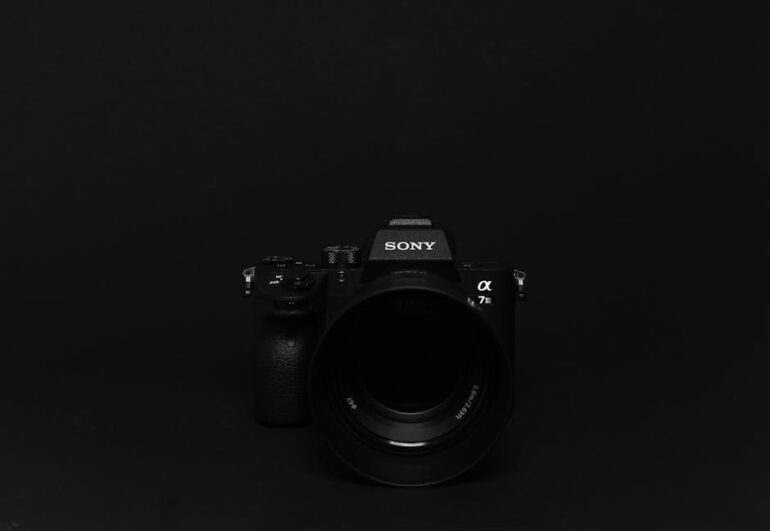Table of Contents
- What is Pay-Per-Click (PPC) Advertising?
- How Pay-Per-Click Works: A Step-by-Step Guide
- Key Strategies for Successful PPC Campaigns
- Common PPC Mistakes to Avoid
- Essential Tools for PPC Management
- Expert Insights on PPC
- Key Takeaways: Mastering Pay-Per-Click
- Frequently Asked Questions (FAQs) About PPC
- Next Steps: Taking Your PPC to the Next Level
Did you know that businesses typically earn $2 in income for every $1 they spend on Google Ads? That’s a powerful statistic, and it highlights the potential of pay-per-click (PPC) advertising. But how doespay-per-click advertising actually work? If you’re new to PPC or looking to refine your existing campaigns, this guide will provide you with a clear understanding of the process, key strategies, common mistakes to avoid, and the tools you’ll need to succeed. It is a detailed discussion of how does pay per click work.
What is Pay-Per-Click (PPC) Advertising?
Pay-per-click advertising is a model where you, as the advertiser, pay a fee each time one of your ads is clicked. Essentially, you’re buying visits to your website rather than attempting to “earn” those visits organically through search engine optimization (SEO). Search engine advertising is one of the most popular forms of PPC.
How Pay-Per-Click Works: A Step-by-Step Guide
Here’s a breakdown of how pay-per-click advertising functions:
1. Keyword Research: It all starts with understanding what your target audience is searching for. Use tools like Google Keyword Planner, SEMrush, or Ahrefs to identify relevant keywords. These tools show you search volume, competition, and estimated costs per click.
2. Campaign Creation: You’ll then create campaigns within your chosen platform (like Google Ads or Microsoft Advertising). These campaigns will be organized around specific themes or product categories.
3. Ad Group Setup: Within each campaign, you create ad groups. Ad groups are collections of related keywords and ads. For example, if you’re selling running shoes, you might have an ad group focused on “trail running shoes” and another on “marathon running shoes.”
4. Ad Creation: Craft compelling ad copy that includes your target keywords and a clear call to action. The better your ad, the higher your click-through rate (CTR) and the lower your costs might become. Write multiple ad variations for each ad group to A/B test which performs best.
5. Bidding: Set your maximum bid for each keyword. This is the highest amount you’re willing to pay each time someone clicks on your ad. The actual amount you pay is often lower than your maximum bid, determined by an auction process.
6. Auction Process: When someone searches for a keyword you’re bidding on, an auction takes place. Factors like your bid amount, the quality of your ad, and the relevance of your landing page determine whether your ad is displayed and in what position.
7. Ad Display: If you win the auction, your ad appears on the search results page (or other placements depending on the platform).
8. Click and Payment: When someone clicks on your ad, they’re directed to your website, and you’re charged your agreed-upon bid amount (or less, as the auction determines).
9. Tracking and Optimization: The journey of pay-per-click includes Continually monitor your campaign performance. Analyze your data to identify what’s working and what’s not. Adjust your bids, keywords, and ad copy to improve your results over time.
Key Strategies for Successful PPC Campaigns
Effective Keyword Selection: Choosing the right keywords is crucial. Don’t just focus on broad terms. Use long-tail keywords (phrases of three or more words) to target more specific searches with higher intent.
Compelling Ad Copy: Your ad copy needs to be attention-grabbing and relevant to the search query. Highlight the benefits of your product or service and include a strong call to action.
Landing Page Optimization: Sending traffic to a relevant and optimized landing page is essential. Make sure your landing page loads quickly, is mobile-friendly, and provides a seamless user experience. This boosts your Quality Score, which will in turn reduce your costs.
Bid Management: Regularly adjust your bids based on performance data. Consider using automated bidding strategies offered by Google Ads to optimize your bids in real-time.
A/B Testing: Continuously test different ad variations, landing pages, and bidding strategies to identify what works best for your target audience.
Common PPC Mistakes to Avoid
Ignoring Negative Keywords: Negative keywords prevent your ads from showing for irrelevant searches.
Not Tracking Conversions: Without conversion tracking, you can’t measure the success of your campaigns.
Setting and Forgetting:PPC requires ongoing monitoring and optimization.
Poor Landing Page Experience: A bad landing page can negate even the best ad copy.
Essential Tools for PPC Management
Google Keyword Planner: A free tool from Google Ads for keyword research.
SEMrush: A comprehensive tool for keyword research, competitor analysis, and site audits.
Ahrefs: Another powerful SEO tool with excellent keyword research and backlink analysis features.
Google Ads Editor: A desktop application for managing large Google Ads accounts.
Google Analytics: Track website traffic and user behavior to measure the effectiveness of your PPC campaigns.
Expert Insights on PPC
“The key to successful PPC is understanding your customer’s journey,” says Neil Patel, a digital marketing expert. “From the initial search query to the final conversion, every touchpoint matters.”
Key Takeaways: Mastering Pay-Per-Click
PPC is a powerful advertising model that can drive targeted traffic to your website.
Effective keyword research, compelling ad copy, and optimized landing pages are essential.
Regular monitoring, analysis, and optimization are crucial for success.
Avoid common mistakes like ignoring negative keywords and failing to track conversions.
Frequently Asked Questions (FAQs) About PPC
Q: How does pay per click work?
A: Pay-per-click (PPC) advertising works by allowing you to bid on keywords relevant to your business. When someone searches for those keywords, your ad may appear in the search results. You only pay when someone clicks on your ad. The placement of your ad depends on your bid and the quality of your ad and landing page.
Q: How much does PPC cost?
A: The cost of PPC varies depending on factors like the industry, competition, and target keywords. You set a budget and bid on keywords.
Q: Is PPC right for my business?
A: PPC can be effective for businesses of all sizes, but it’s essential to have a clear understanding of your target audience and marketing goals. If you need rapid results and have a budget for advertising, PPC can be a great option.
Q: How do I get started with PPC?
A: You can start by creating an account on a PPC platform like Google Ads or Microsoft Advertising. Research relevant keywords, create compelling ad copy, and set a budget. Then, track your results and optimize your campaigns over time.
Next Steps: Taking Your PPC to the Next Level
Now that you understand the basics of pay-per-click, it’s time to put your knowledge into action. Here’s how to proceed:
1. Choose Your Platform: Decide which PPC platform is right for you (Google Ads, Microsoft Advertising, or others).
2. Start Small: Begin with a small budget and a limited number of keywords to test the waters.
3. Track Everything: Set up conversion tracking to measure the success of your campaigns.
4. Continuously Learn: Stay up-to-date on the latest PPC trends and best practices.
For example, consider reading up on recent changes to Google’s matching policies, as reported by Search Engine Land. You might also check out resources on campaign optimization and the importance of mobile-first strategies as covered by Marketing Dive.
Finally, I recommend you take a look at your marketing budget, set up some testing strategies, and learn as you go.
Are you ready to drive more traffic and generate more leads with PPC? Start your first campaign today and see the results for yourself!

















